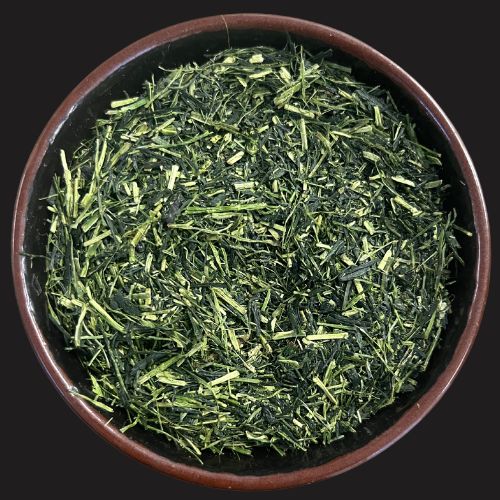- Style: Asamushi
- Cultivar: Yabukita
J, how would it feel to drink tea of your own making?
Having a tea plantation is something few people are lucky enough to have, but we're going to give you the chance to make your own tea.
The tea leaves are lovingly and carefully grown by the renowned "Gyokuro Guru" Master Sakamoto, at his naturally run tea plantation in Shibushi, Kagoshima. He then processed them into aracha and sent them to us... and we decided to give you the opportunity to experience the final processing for yourself. Of course, you can taste the aracha unprocessed, as is done in Japan to determine quality, but we highly recommend you try the shiage.
What will you need?
- A large sieve
- A larger bowl
- A good pan that heats evenly.
What's the process?
Once we have the final shiage processing "brushed to the marrow" we are left with the two most important steps:
- Sorting - the goal of this step, is to separate the different parts of the tea.
Place the sieve over the bowl, pour the aracha into the sieve and start with a light shake. The darker leaves will drop into the bowl below, while the lighter green stalks will remain in the sieve. Gradually, you'll see the dark leaves accumulate in the bowl below and the stems remain in the sieve.
- Hire - Roasting - the aim is to accentuate the aroma of the tea and fix it
Raise the flames or set the stove to low and place the well-washed pan on it. Make sure it's completely dry before you start.
Dump the contents of the strainer (light green stems and petioles with leaves mixed in, depending on how thoroughly you've sorted) into the pan. Heat the pan, shaking or stirring as necessary. Within moments, the heated tea leaves will begin to give off a wonderful aroma. Watch the leaves and stems closely for colour changes, as colour along with aroma is the best indicator of when to stop the process. For stems and stalks, I prefer a higher roasting level ("to houjicha.") Once you are satisfied with the result, dump the leaves from the pan into another container and let cool.
Thoroughly wipe the remaining tea dust from the pan with a napkin and start the process a second time, this time with dark leaves. Here I recommend a more gentle roasting method, so called "stop in time". Once you are satisfied, pour the still warm leaves back into the bag and seal it.
- Aging - Gyokuro needs time to develop its full flavor.
However, it is certainly not a bad idea to taste the resulting tea (1-2g per shiboridashi) and then set it aside and return to it in 3 days, a week, 14 days and it should reach full maturity after a month of hiire.
Words of Master Sakamoto "いよいよドラマの始まりです"
































